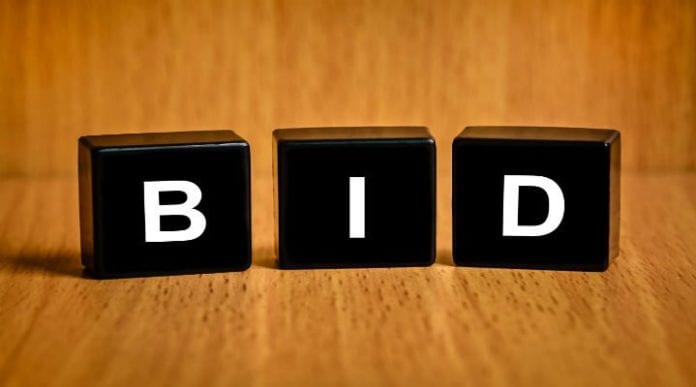Bidding in the Federal Communications Commission’s latest auction of millimeter wave spectrum has reached more than $1.4 billion, after three days and eight rounds.
Three more rounds will be held today, with three rounds per day to be held next week as well.
The latest Spectrum Frontiers auction of millimeter wave bands raised more than $637 million in its first round of bidding. By the end of the first day, the bids totaled more than $715 million.
More than 14,100 licenses are up for grabs across three mmWave bands in Auction 103: the upper 37 GHz band (37.6-38.6 GHz), the 39 GHz band (38.6-40 GHz) and the 47 GHz band (47.2-48.2 GHz). The licenses are based on a Partial Economic Area geographic basis which divides the country into 416 sections.
There is more spectrum available at 39 GHz than in the other two bands, with 14 blocks of 100 megahertz available, or 5,824 individual licenses. The 47 GHz and upper 37 GHz bands each have 4,160 licenses available, or 10 blocks of 100 megahertz in each PEA. The FCC has authorized either fixed or mobile use in the bands, and the commission has emphasized the sheer amount of spectrum available: at 3,400 megahertz, it’s the largest amount of spectrum ever offered in an auction.
Sasha Javid, COO at the Spectrum Consortium and former chief data officer and legal advisor on the FCC’s Incentive Auction Task Force, has been analyzing the data from each round and noted in a blog post that the large amount of spectrum is likely to mean a very low price per megahertz/POP.
“With 3400 megahertz of spectrum available and just 35 bidders competing, it will be a struggle for Auction 103 to reach anywhere near the disappointing $0.009112 per MHz-POP that Auction 102 reached after 91 rounds,” Javid wrote.
There are 35 qualified bidders competing for spectrum in Auction 103, which, like Auction 102, is using a clock format for the first phase. In the clock phase, bidders compete for the license type they desire, with prices automatically increase each round, until bidders’ demand for licenses at a certain price matches the supply. An assignment phase for specific spectrum blocks will follow the clock phase.
The FCC, Javid noted, has divided the spectrum into two categories of licenses: 24 100-MHz licenses in the 37 and 39 GHz frequency blocks (designated as MN or M/N) and ten 100-MHz licenses in the 47 GHz frequency block, the P licenses. He pointed out that the demand for the MN licenses is higher than for the P licenses — after the first round, “only 9 PEAs actually had bids for P licenses,” Javid wrote.
As is typical, licenses in dense urban areas — New York City; Los Angeles and San Francisco, California; Chicago, Illinois; and the Baltimore-Washington D.C.-area — were the most hotly contested from the get-go. As of Thursday’s closing round, the license areas with the highest demand were Los Angeles, New York, San Francisco and Chicago.
“Pushing more spectrum into the commercial marketplace is a key component of our 5G Fast plan to advance American leadership in the next generation of wireless connectivity,” FCC Chairman Ajit Pai said in a statement earlier this week, noting that the FCC expects to hold two auctions of mid-band spectrum next year: its Priority Access License auction for the Citizens Broadband Radio Service spectrum at 3.5 GHz in late June, and a C-Band spectrum auction “in the latter part of 2020.”

